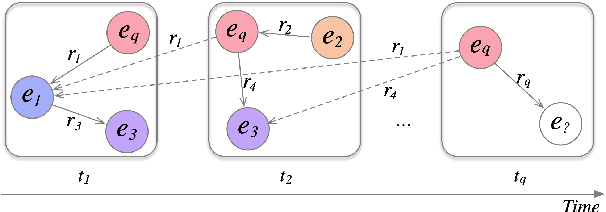Haohai Sun
MiniMax-01: Scaling Foundation Models with Lightning Attention
Jan 14, 2025Abstract:We introduce MiniMax-01 series, including MiniMax-Text-01 and MiniMax-VL-01, which are comparable to top-tier models while offering superior capabilities in processing longer contexts. The core lies in lightning attention and its efficient scaling. To maximize computational capacity, we integrate it with Mixture of Experts (MoE), creating a model with 32 experts and 456 billion total parameters, of which 45.9 billion are activated for each token. We develop an optimized parallel strategy and highly efficient computation-communication overlap techniques for MoE and lightning attention. This approach enables us to conduct efficient training and inference on models with hundreds of billions of parameters across contexts spanning millions of tokens. The context window of MiniMax-Text-01 can reach up to 1 million tokens during training and extrapolate to 4 million tokens during inference at an affordable cost. Our vision-language model, MiniMax-VL-01 is built through continued training with 512 billion vision-language tokens. Experiments on both standard and in-house benchmarks show that our models match the performance of state-of-the-art models like GPT-4o and Claude-3.5-Sonnet while offering 20-32 times longer context window. We publicly release MiniMax-01 at https://github.com/MiniMax-AI.
TimeTraveler: Reinforcement Learning for Temporal Knowledge Graph Forecasting
Sep 09, 2021



Abstract:Temporal knowledge graph (TKG) reasoning is a crucial task that has gained increasing research interest in recent years. Most existing methods focus on reasoning at past timestamps to complete the missing facts, and there are only a few works of reasoning on known TKGs to forecast future facts. Compared with the completion task, the forecasting task is more difficult that faces two main challenges: (1) how to effectively model the time information to handle future timestamps? (2) how to make inductive inference to handle previously unseen entities that emerge over time? To address these challenges, we propose the first reinforcement learning method for forecasting. Specifically, the agent travels on historical knowledge graph snapshots to search for the answer. Our method defines a relative time encoding function to capture the timespan information, and we design a novel time-shaped reward based on Dirichlet distribution to guide the model learning. Furthermore, we propose a novel representation method for unseen entities to improve the inductive inference ability of the model. We evaluate our method for this link prediction task at future timestamps. Extensive experiments on four benchmark datasets demonstrate substantial performance improvement meanwhile with higher explainability, less calculation, and fewer parameters when compared with existing state-of-the-art methods.
 Add to Chrome
Add to Chrome Add to Firefox
Add to Firefox Add to Edge
Add to Edge